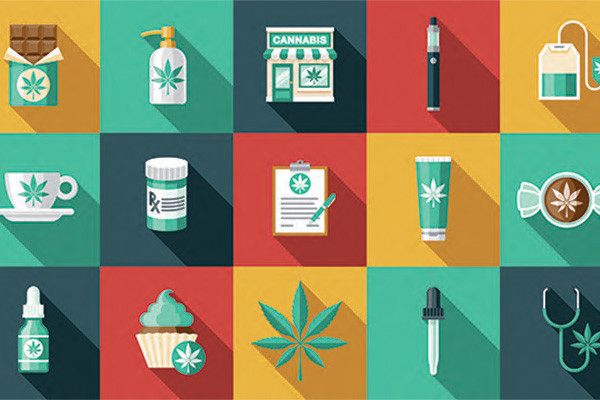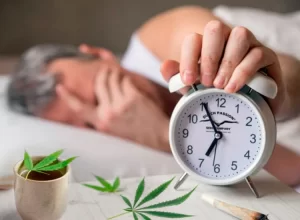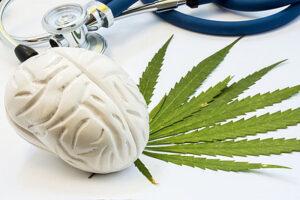Patients have a variety of options when it comes to how they can consume cannabis for its healing properties and fight negative symptoms. Each method offers unique benefits and considerations, catering to individual preferences and medical needs. In this blog post, we’ll delve into the different ways to use medical marijuana and explore the pros and cons of each method.
Through Smoking/Vaping:
- Smoking:
The most well-known and popular method is smoking medical cannabis flower or concentrates. Smoking cannabis involves inhaling the cannabinoids and terpenes released from burning dried flower buds or wax. This method provides rapid relief and effects, typically within minutes, making it ideal for acute symptom relief such as pain or nausea. Many patients prefer smoking for its immediate relief and its ease of measuring dosage.
Pros:
- Quick relief from symptoms
- Easy to control dosage by taking small inhalations or only using a small amount
- Wide variety of strains available for smoking
- Wide variety of ways to smoke
Cons:
- Inhalation of smoke may irritate the respiratory system
- Not suitable for individuals with lung conditions or respiratory issues
- Strong , lasting odor and visible smoke
- Requires some sort of additional equipment or paper to use
- Vaping:
Vaping heats cannabis flower or concentrates to a temperature that releases cannabinoids and terpenes without combustion, reducing potential health risks associated with smoking. Vaporizers come in various forms, including portable pens and tabletop devices, offering discreet and precise dosing options.
Pros:
- Inhalation without combustion reduces exposure to harmful toxins
- Discreet and portable options available
- Precise temperature control for customized experiences
- Extremely easy to use
Cons:
- Initial cost of purchasing a vaporizer device
- Requires regular maintenance and cleaning
- Quality of vaporizers varies; choose reputable brands for safety
- Often needs to be charged or batteries replaced
Through Eating/Drinking:
- Edibles:
Edibles are food products infused with cannabis extracts, such as THC or CBD. Common edibles include gummies, chocolates, baked goods, and beverages; and are offered in a variety of flavors. Effects from edibles can take longer to kick in (often 30 minutes to 2 hours) compared to inhalation methods but can provide long-lasting relief, lasting several hours or more.
Pros:
- No inhalation required; discreet and convenient consumption
- Long-lasting effects suitable for sustained symptom relief
- Diverse range of flavors and products available
Cons:
- Delayed onset of effects; may lead to accidental overconsumption if not patient
- Effects can vary based on individual metabolism and digestive factors
- Accurate dosing is crucial; start with low doses and wait before consuming more
- Can be easily mistaken for other food and must be properly identified
- Tinctures:
Cannabis tinctures are liquid extracts infused with cannabinoids, typically administered in your mouth through your gums or under the tongue for rapid absorption. Tinctures offer extremely precise dosing control and can be mixed into food or beverages for discreet consumption.
Pros:
- Typically only takes 15-30 minutes for effects to take place
- Precise dosing control with marked droppers
- Versatile; can be added to food, beverages, or administered directly
- The same as edibles, but effects happen much faster
Cons:
- Some tinctures may contain alcohol as a solvent; choose alcohol-free options if preferred
- Taste may be strong or herbal, causing an unpleasant experience
- Can take a long time to absorb under the tongue
Additional Methods:
- Topicals/Ointments:
Cannabis-infused topicals include creams, balms, and lotions applied directly to the skin for localized relief of pain, inflammation, and skin conditions. Topicals are non-intoxicating and do not produce psychoactive effects, making them suitable for patients seeking targeted symptom relief without systemic impact.
Pros:
- No psychoactive effects
- Targeted relief for joint pain, muscle soreness, and skin conditions
- Easy to apply and integrate into skincare routines
Cons:
- Effects are localized and may not penetrate deep tissues for certain conditions
- Limited research on long-term use and efficacy for certain ailments
- Check ingredient labels for potential allergens or sensitivities
- Could be ineffective for your type of pain
- Sublingual Sprays (Mouth Spray):
Sublingual sprays are very similar to breathe sprays. Similar to tinctures, sublingual sprays deliver cannabinoids directly under the tongue for rapid absorption into the bloodstream. Sprays offer convenience and precise dosing control.
Pros:
- Quick absorption into the bloodstream for rapid effects
- Discreet and portable; easy to use on the go
- No inhalation required; suitable for individuals avoiding smoking or vaping
- Easier to use than tinctures
Cons:
- Limited flavor options compared to edibles or tinctures
- Dosage may be challenging to adjust with spray mechanisms
- Quality and consistency of sprays vary by brand and formulation
- May coat the whole mouth
- Capsules and Pills:
Medical marijuana capsules and pills contain measured doses of cannabinoids for oral consumption. This method provides consistent dosing and is discreet, resembling traditional pharmaceutical medications.
Pros:
- Precise dosing control with standardized formulations
- No inhalation required; suitable for patients with respiratory concerns
- Convenient and familiar format for consistent medication management
- Easy to store discreetly
Cons:
- Slower onset of effects compared to inhalation or sublingual methods
- Limited variety of strains and cannabinoid profiles available
- May not be suitable for patients with digestive issues or slow metabolism
- Can be mixed up with other medications
Choosing the Right Method for You
Selecting the optimal method of using medical marijuana depends on individual preferences, medical conditions, and desired effects. Consider the following factors when choosing a consumption method:
Onset and Duration: Inhalation methods offer rapid onset but shorter duration of effects, while oral methods have delayed onset but longer-lasting effects.
Health Considerations: Patients with respiratory issues may prefer non-smoking methods such as vaping, edibles, or topicals.
Dosage Precision: Some methods, like tinctures and capsules, allow for precise dosing control, making them suitable for patients who require accurate medication management.
Your Appeal: Just because one method may be faster or more precise doesn’t mean that should be the one you use; use the one that you prefer even if it will take longer or may be more difficult to track
Do Your Research, and Consult Your Doctor or a Dispensary Tech for Questions
As always, consult with healthcare professionals or certified medical cannabis specialists to determine the most appropriate method and dosage based on individual health considerations and treatment goals. This article offered just a brief overview, and choosing the right method for you can be confusing. Understanding the advantages and considerations of each method is key for you to make informed decisions and harness the therapeutic potential of medical marijuana for improved well-being and quality of life.
Interested in getting your medical marijuana card? Click here to schedule an appointment with the premiere medical marijuana doctor in the Jackson Metro Area.






